Abstract
The relation between molar and molecular aspects of time allocation was studied in pigeons on concurrent variable-time variable-time schedules of reinforcement. Fifteen-minute reinforcer-free periods were inserted in the middle of every third session. Generalized molar matching of time ratios to reinforcer ratios was observed during concurrent reinforcement. Contrary to melioration theory, preference was unchanged during the reinforcer-free periods as well as in extinction. In addition to this long-term effect of reinforcement, short-term effects were observed: Reinforcers increased the duration of the stays during which they were delivered but had little consistent effect either on the immediately following stay in the same schedule or on the immediately following stay in the alternative schedule. Thus, an orderly effect of reinforcer delivery on molecular aspects of time allocation was observed, but because of its short-term nature, this effect cannot account for the matching observed at the molar level.
Keywords: choice, matching, short-term reinforcer effects, long-term reinforcer effects, concurrent schedules, extinction, stay durations, time allocation, pigeons
Full text
PDF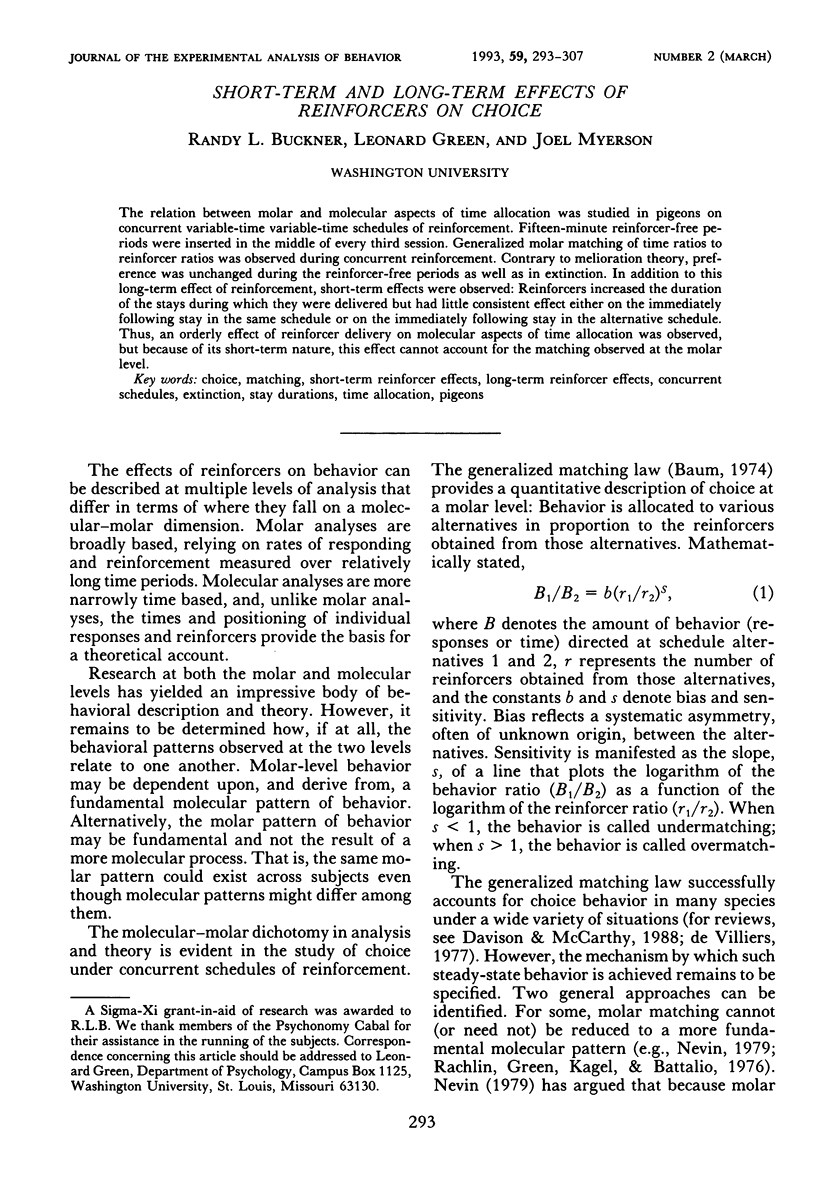
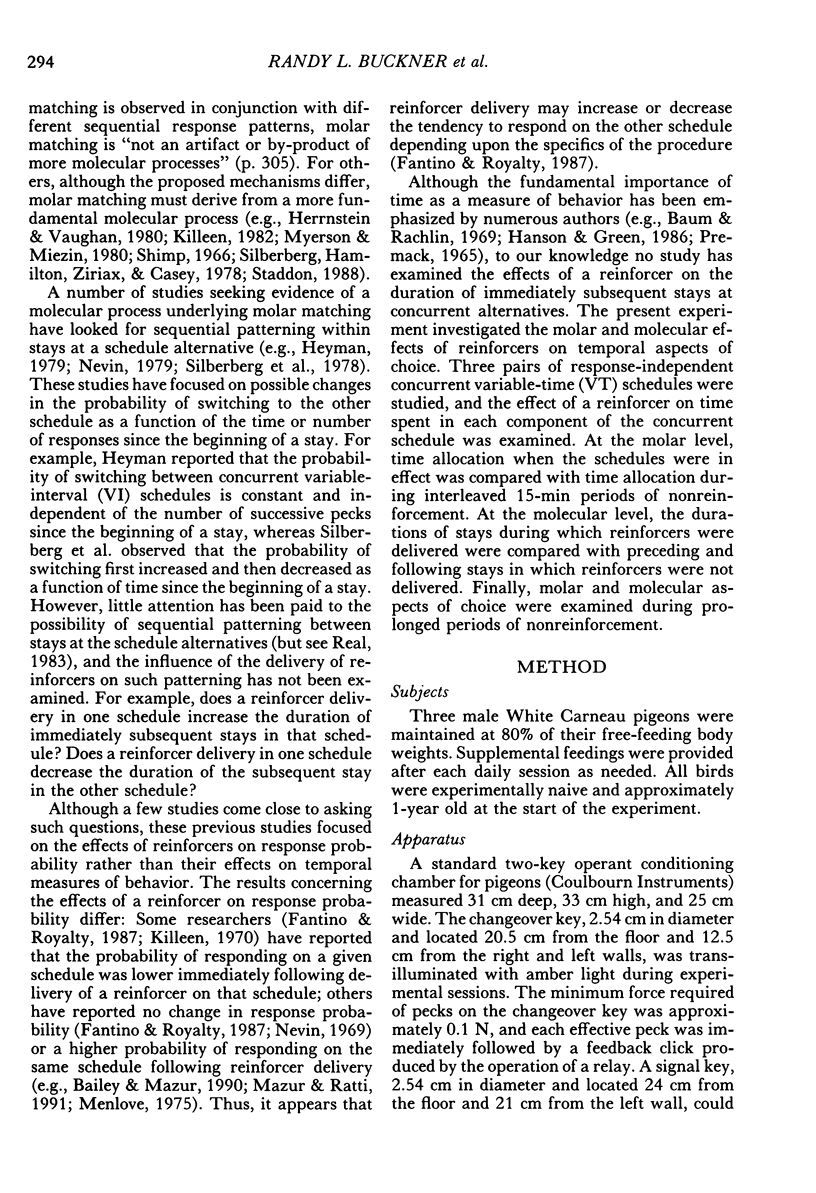
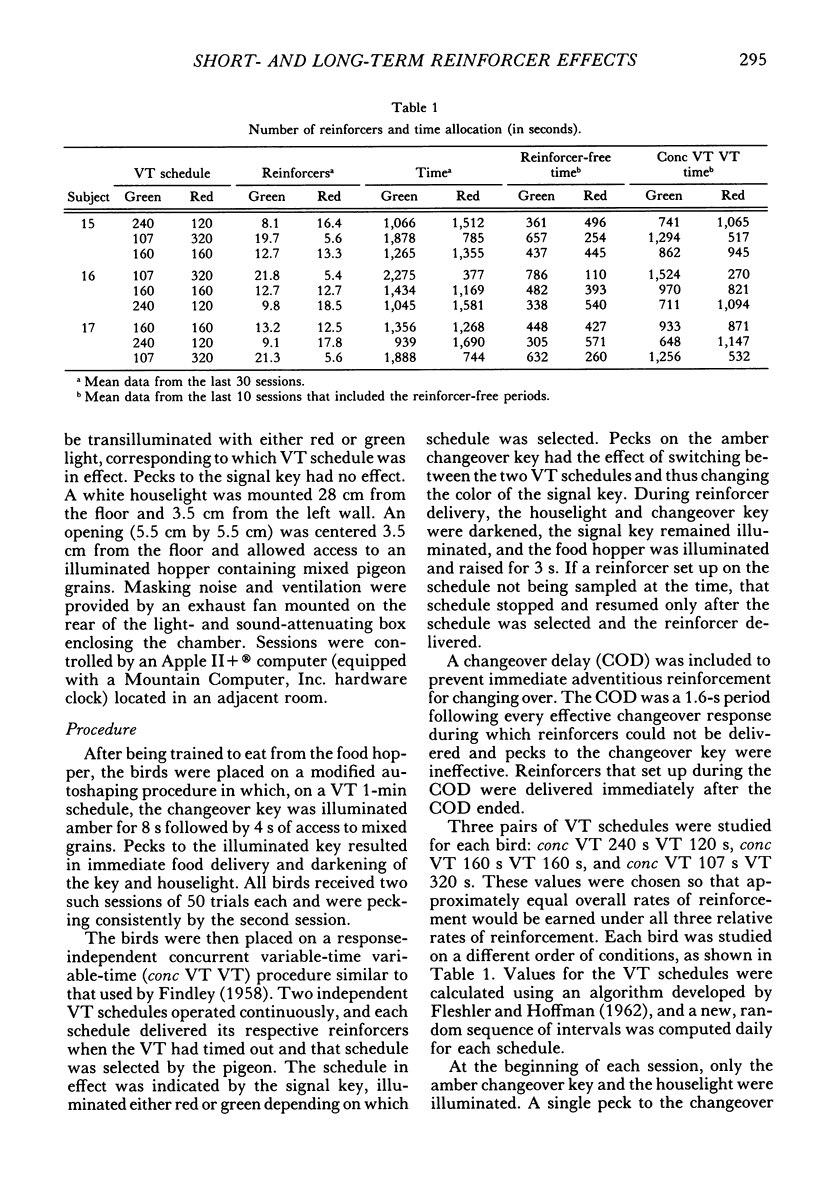
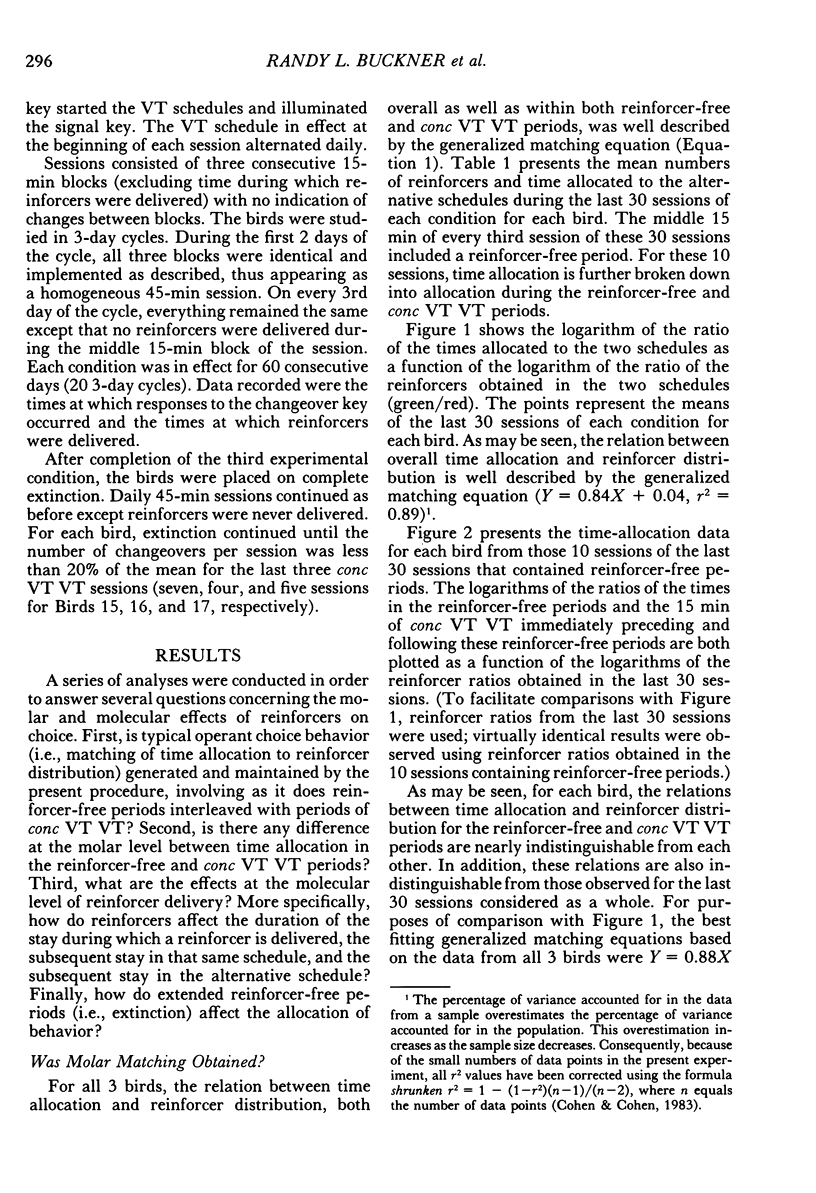
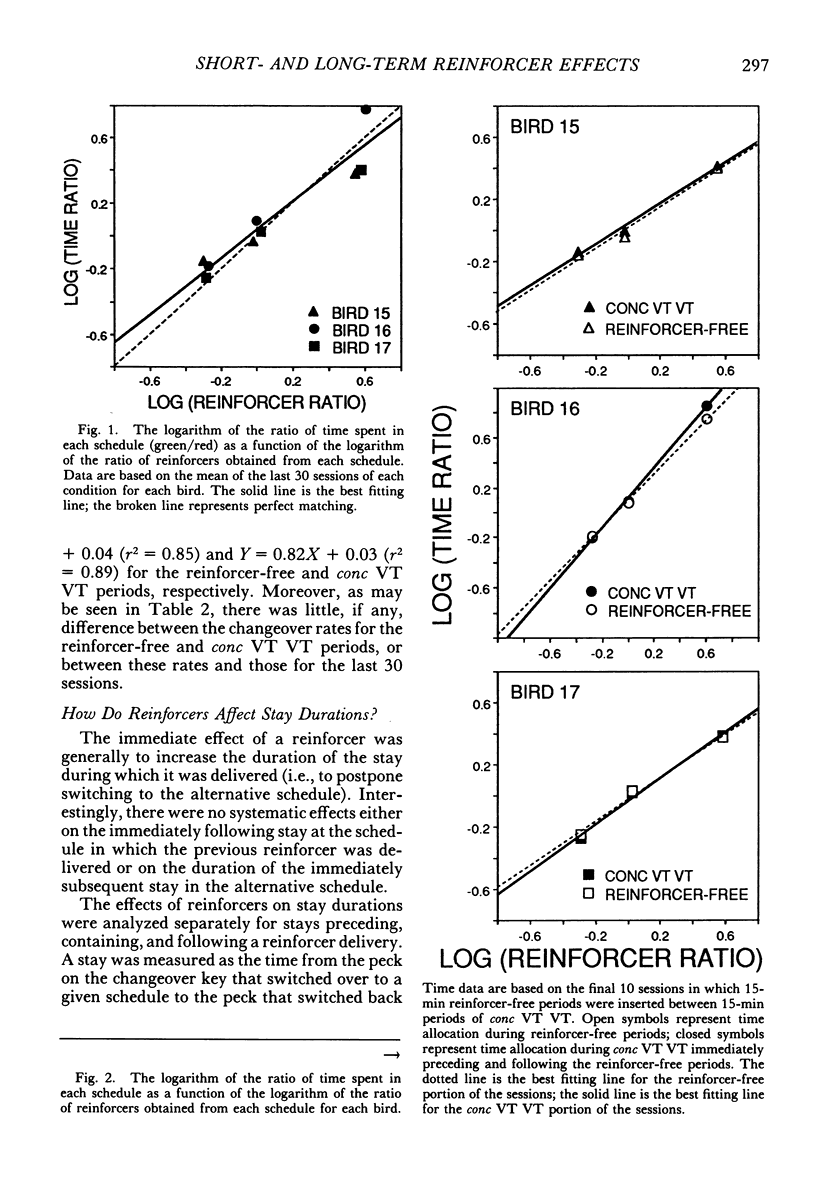
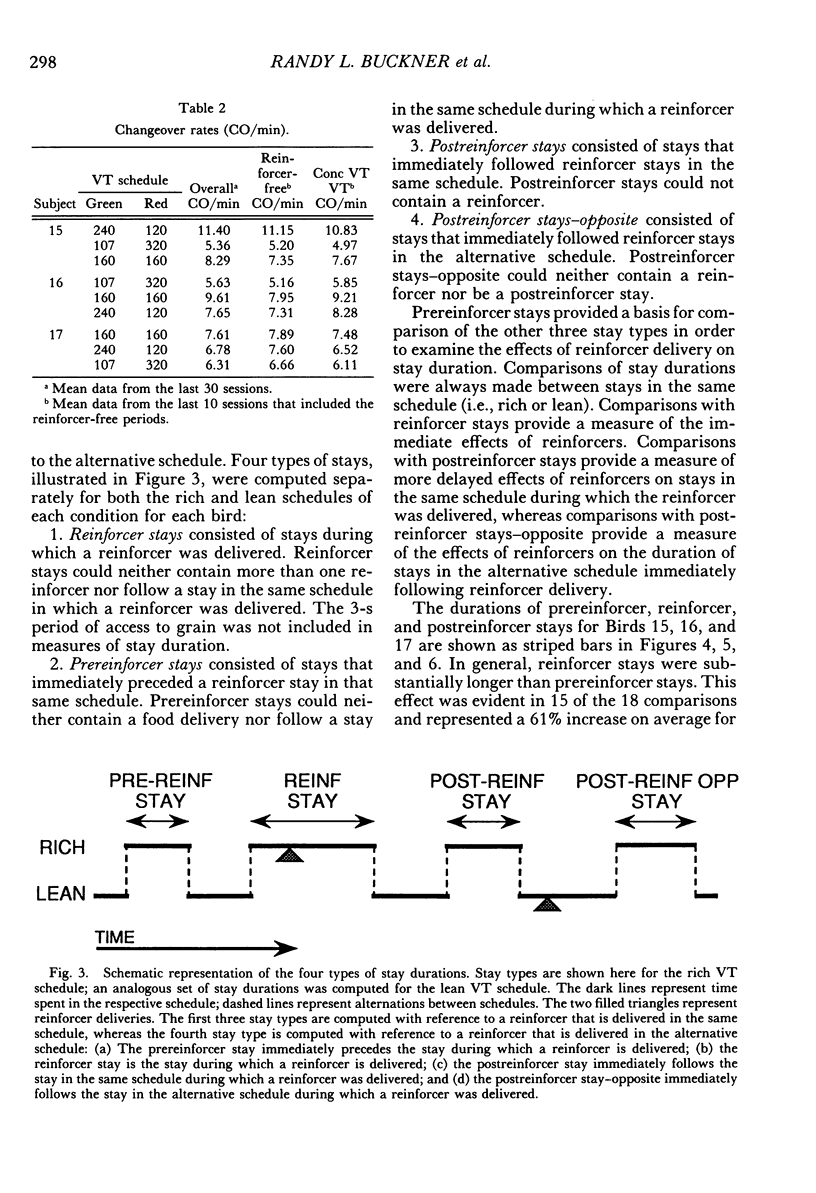
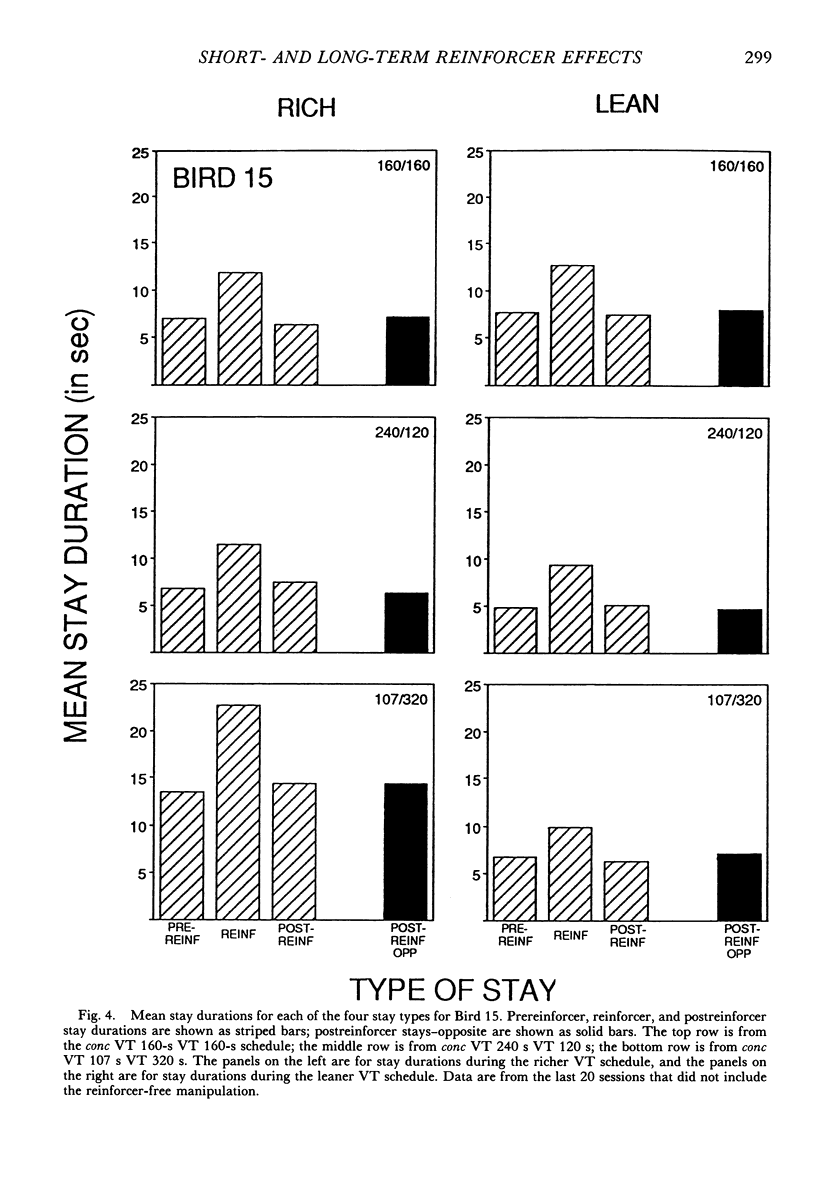
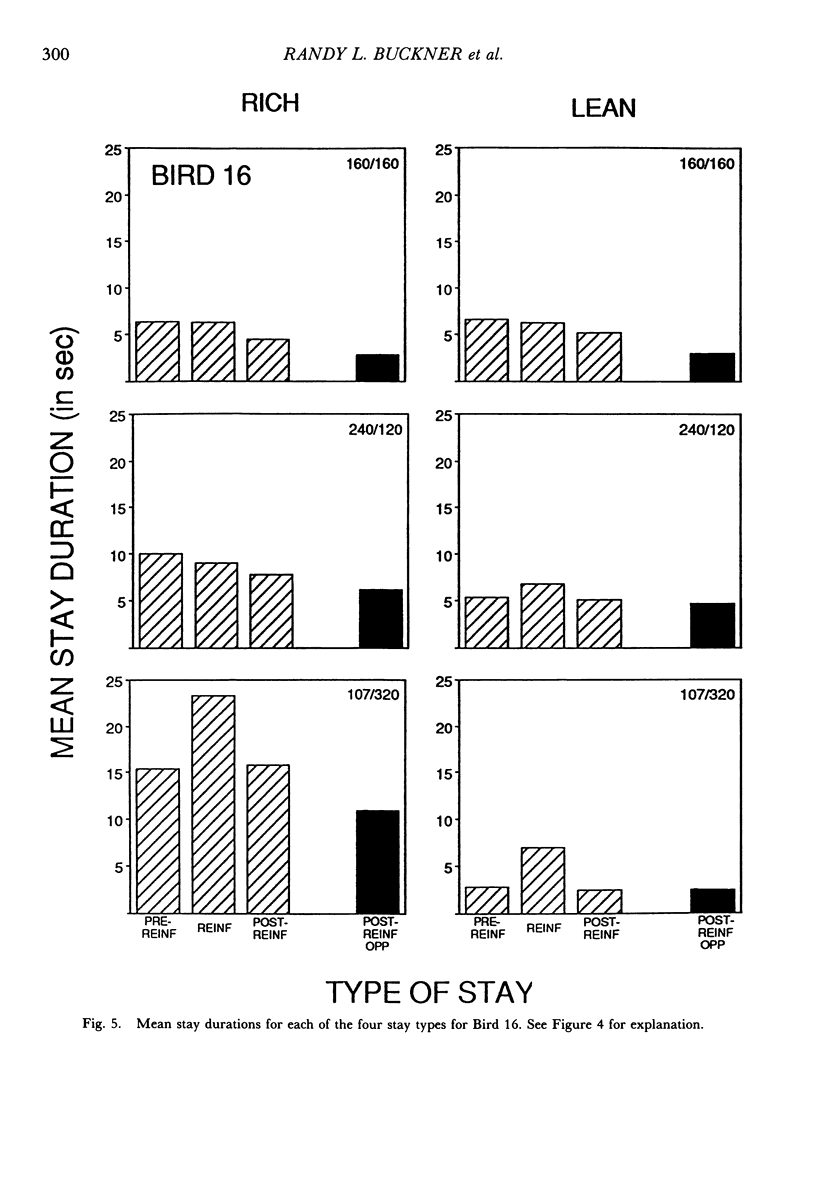
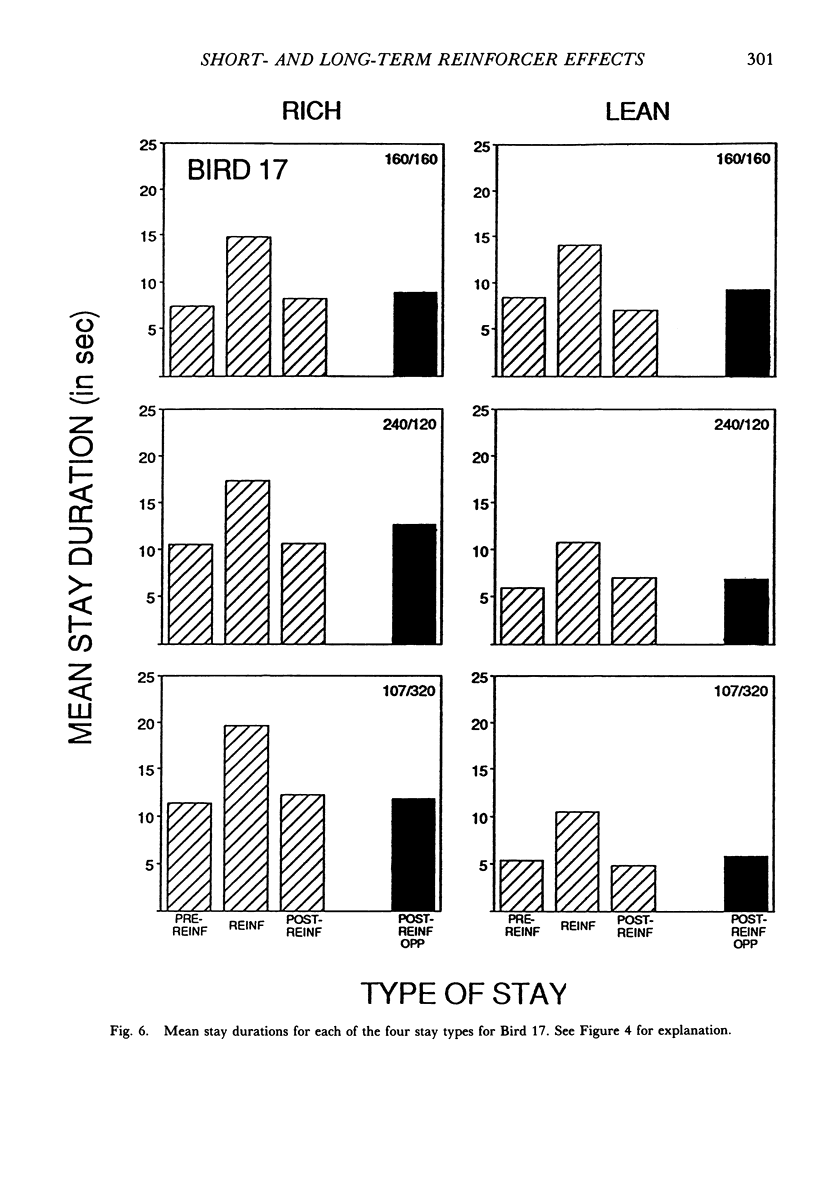
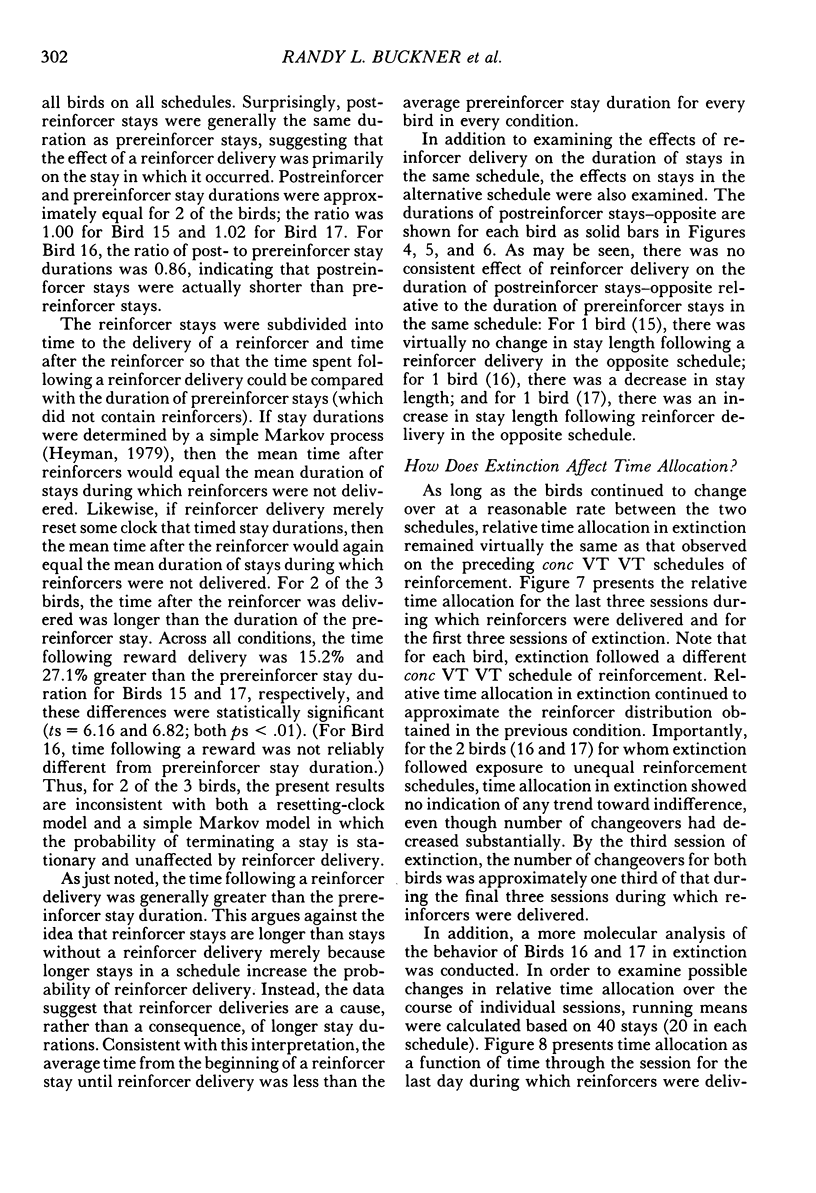
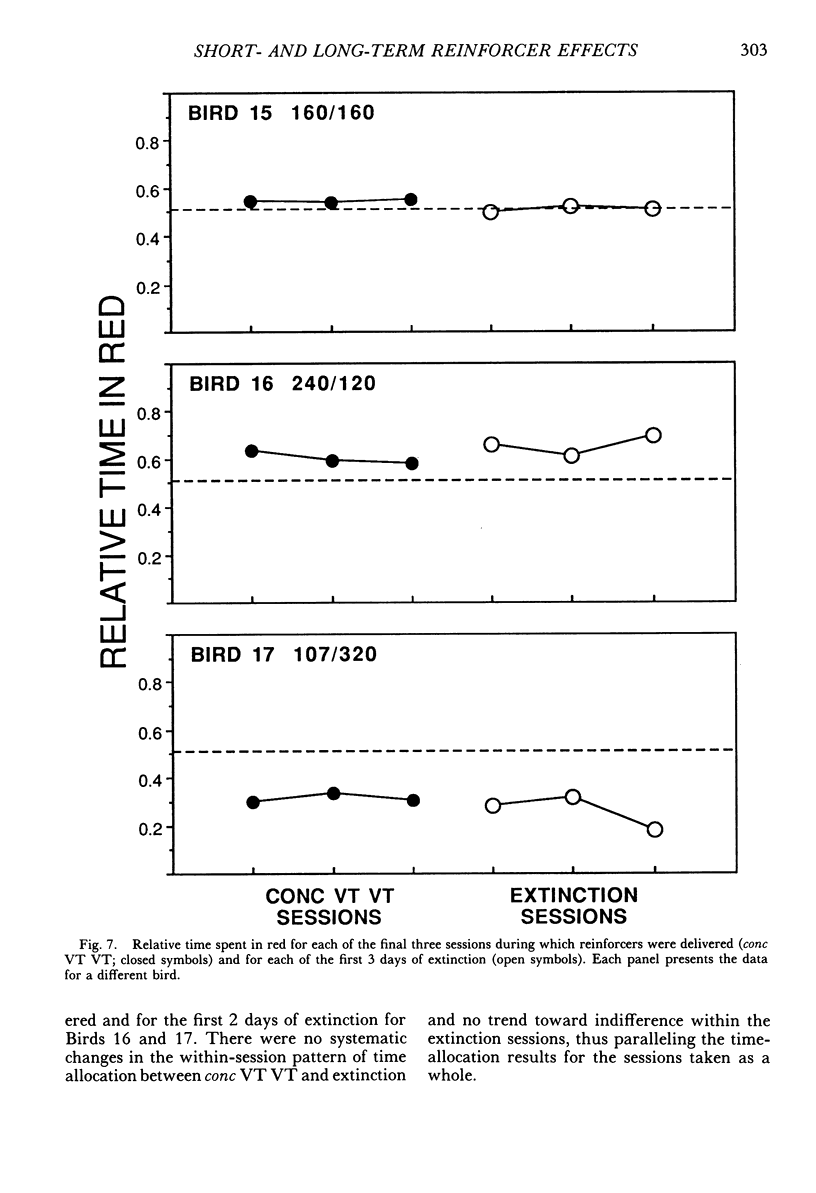

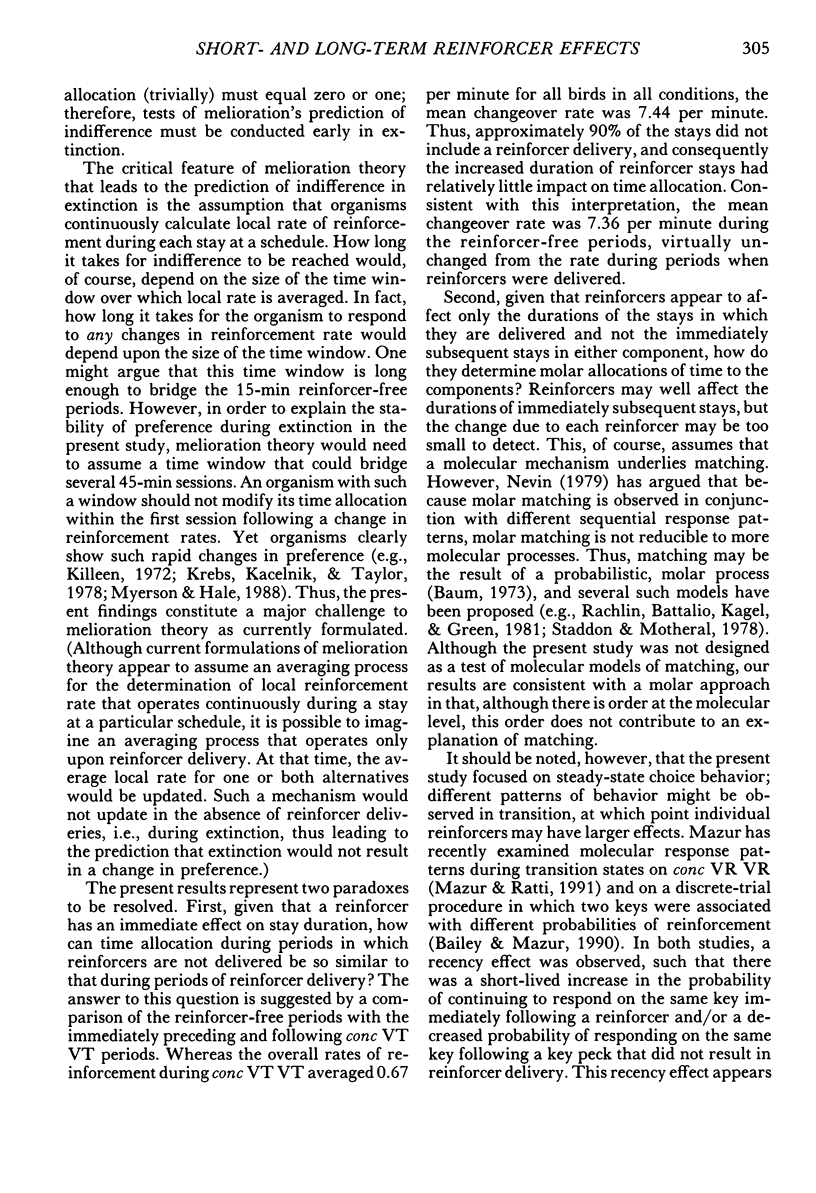
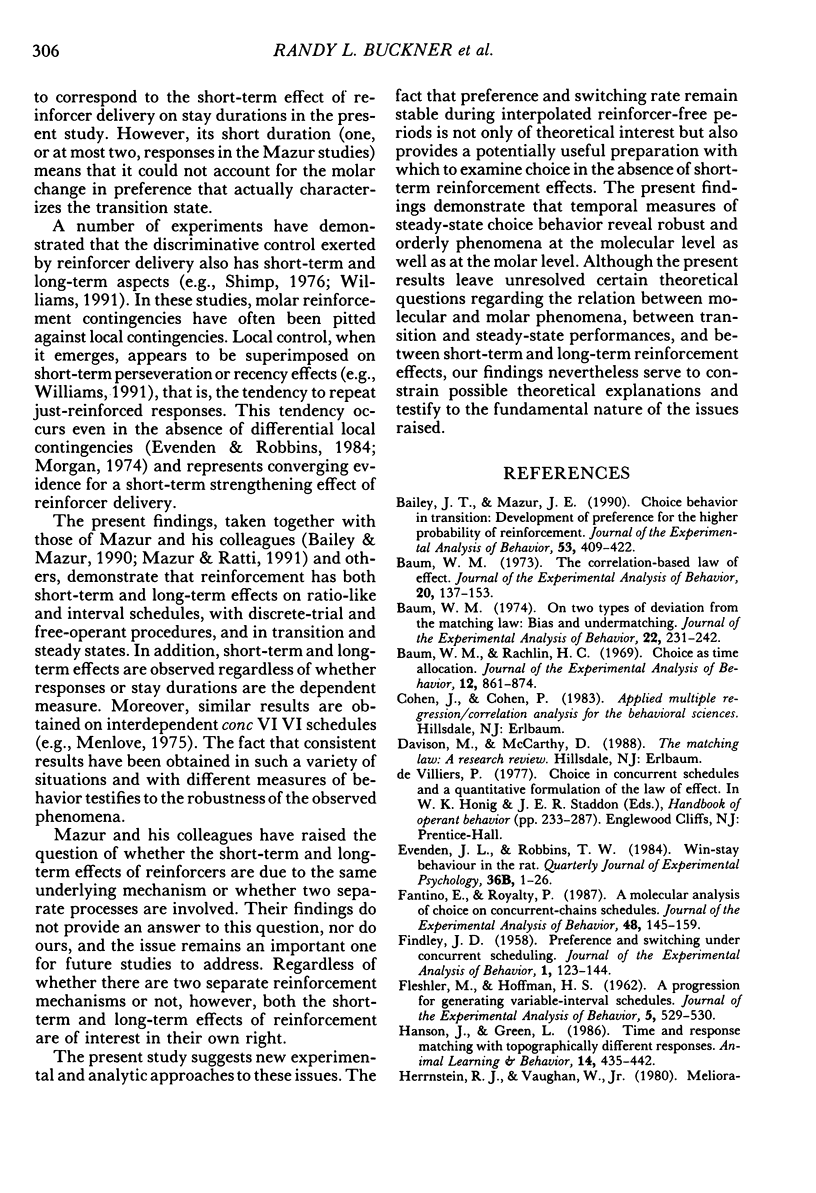
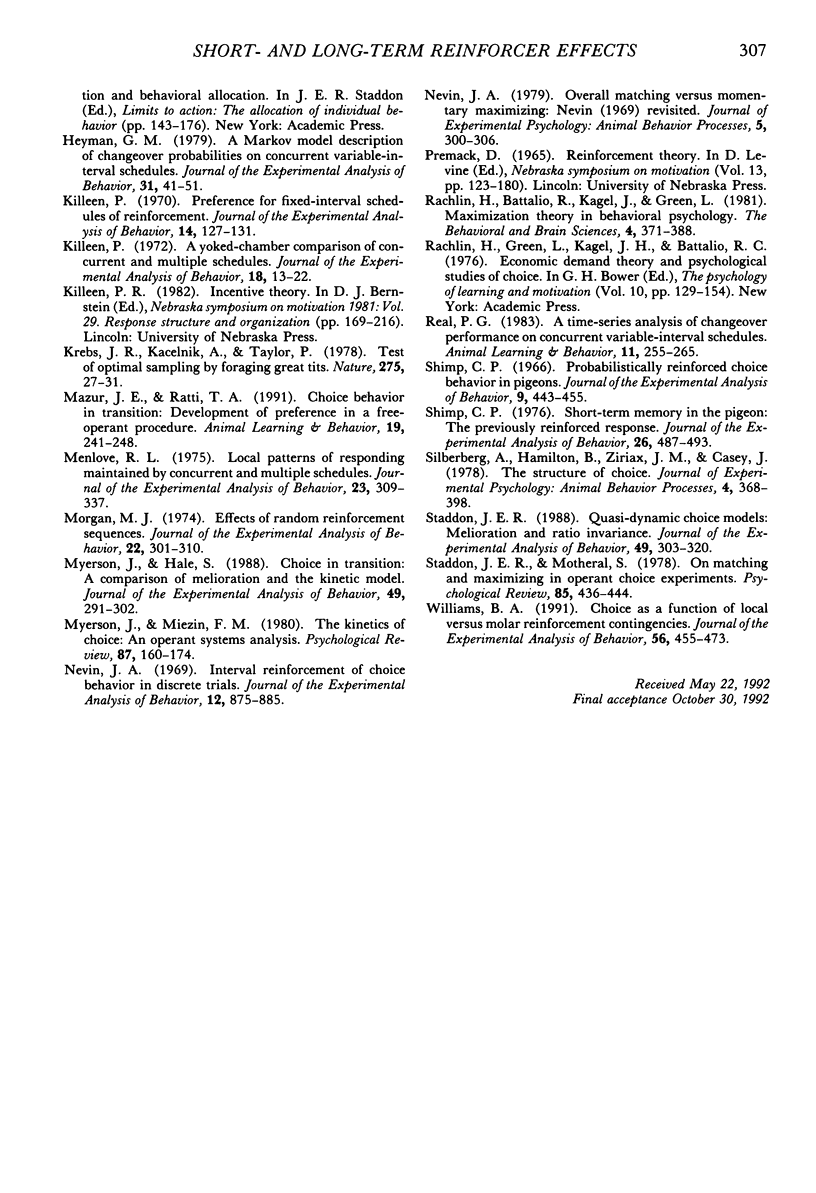
Selected References
These references are in PubMed. This may not be the complete list of references from this article.
- Bailey J. T., Mazur J. E. Choice behavior in transition: development of preference for the higher probability of reinforcement. J Exp Anal Behav. 1990 May;53(3):409–422. doi: 10.1901/jeab.1990.53-409. [DOI] [PMC free article] [PubMed] [Google Scholar]
- Baum W. M. On two types of deviation from the matching law: bias and undermatching. J Exp Anal Behav. 1974 Jul;22(1):231–242. doi: 10.1901/jeab.1974.22-231. [DOI] [PMC free article] [PubMed] [Google Scholar]
- Baum W. M., Rachlin H. C. Choice as time allocation. J Exp Anal Behav. 1969 Nov;12(6):861–874. doi: 10.1901/jeab.1969.12-861. [DOI] [PMC free article] [PubMed] [Google Scholar]
- Baum W. M. The correlation-based law of effect. J Exp Anal Behav. 1973 Jul;20(1):137–153. doi: 10.1901/jeab.1973.20-137. [DOI] [PMC free article] [PubMed] [Google Scholar]
- FLESHLER M., HOFFMAN H. S. A progression for generating variable-interval schedules. J Exp Anal Behav. 1962 Oct;5:529–530. doi: 10.1901/jeab.1962.5-529. [DOI] [PMC free article] [PubMed] [Google Scholar]
- Fantino E., Royalty P. A molecular analysis of choice on concurrent-chains schedules. J Exp Anal Behav. 1987 Jul;48(1):145–159. doi: 10.1901/jeab.1987.48-145. [DOI] [PMC free article] [PubMed] [Google Scholar]
- Findley J. D. Preference and Switching under Concurrent Scheduling. J Exp Anal Behav. 1958 Apr;1(2):123–144. doi: 10.1901/jeab.1958.1-123. [DOI] [PMC free article] [PubMed] [Google Scholar]
- Heyman G. M. A Markov model description of changeover probabilities on concurrent variable-interval schedules. J Exp Anal Behav. 1979 Jan;31(1):41–51. doi: 10.1901/jeab.1979.31-41. [DOI] [PMC free article] [PubMed] [Google Scholar]
- Killeen P. A yoked-chamber comparison of concurrent and multiple schedules. J Exp Anal Behav. 1972 Jul;18(1):13–22. doi: 10.1901/jeab.1972.18-13. [DOI] [PMC free article] [PubMed] [Google Scholar]
- Killeen P. Preference for fixed-interval schedules of reinforcement. J Exp Anal Behav. 1970 Sep;14(2):127–131. doi: 10.1901/jeab.1970.14-127. [DOI] [PMC free article] [PubMed] [Google Scholar]
- Menlove R. L. Local patterns of responding maintained by concurrent and multiple schedules. J Exp Anal Behav. 1975 May;23(3):309–337. doi: 10.1901/jeab.1975.23-309. [DOI] [PMC free article] [PubMed] [Google Scholar]
- Morgan M. J. Effects of random reinforcement sequences. J Exp Anal Behav. 1974 Sep;22(2):301–310. doi: 10.1901/jeab.1974.22-301. [DOI] [PMC free article] [PubMed] [Google Scholar]
- Myerson J., Hale S. Choice in transition: A comparison of melioration and the kinetic model. J Exp Anal Behav. 1988 Mar;49(2):291–302. doi: 10.1901/jeab.1988.49-291. [DOI] [PMC free article] [PubMed] [Google Scholar]
- Nevin J. A. Interval reinforcement of choice behavior in discrete trials. J Exp Anal Behav. 1969 Nov;12(6):875–885. doi: 10.1901/jeab.1969.12-875. [DOI] [PMC free article] [PubMed] [Google Scholar]
- Shimp C. P. Probabilistically reinforced choice behavior in pigeons. J Exp Anal Behav. 1966 Jul;9(4):443–455. doi: 10.1901/jeab.1966.9-443. [DOI] [PMC free article] [PubMed] [Google Scholar]
- Shimp C. P. Short-term memory in the pigeon: the previously reinforced response. J Exp Anal Behav. 1976 Nov;26(3):487–493. doi: 10.1901/jeab.1976.26-487. [DOI] [PMC free article] [PubMed] [Google Scholar]
- Staddon J. E. Quasi-dynamic choice models: Melioration and ratio invariance. J Exp Anal Behav. 1988 Mar;49(2):303–320. doi: 10.1901/jeab.1988.49-303. [DOI] [PMC free article] [PubMed] [Google Scholar]
- Williams B. A. Choice as a function of local versus molar reinforcement contingencies. J Exp Anal Behav. 1991 Nov;56(3):455–473. doi: 10.1901/jeab.1991.56-455. [DOI] [PMC free article] [PubMed] [Google Scholar]


